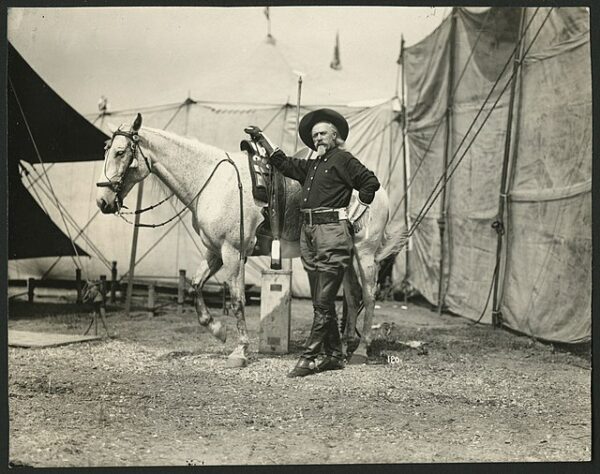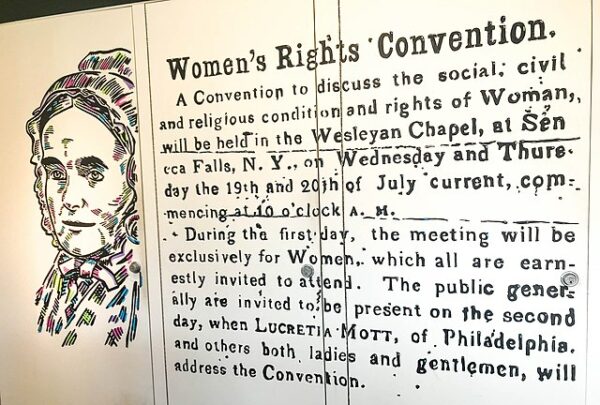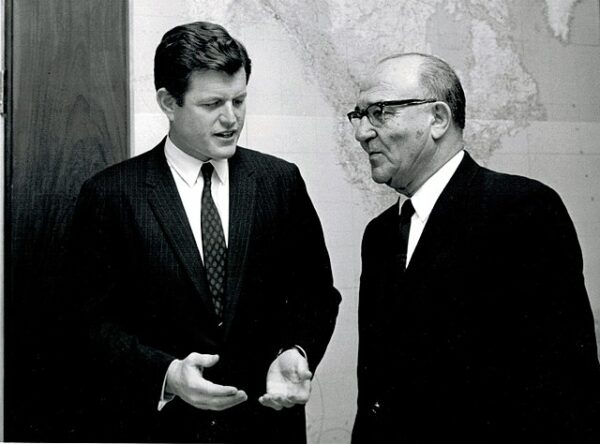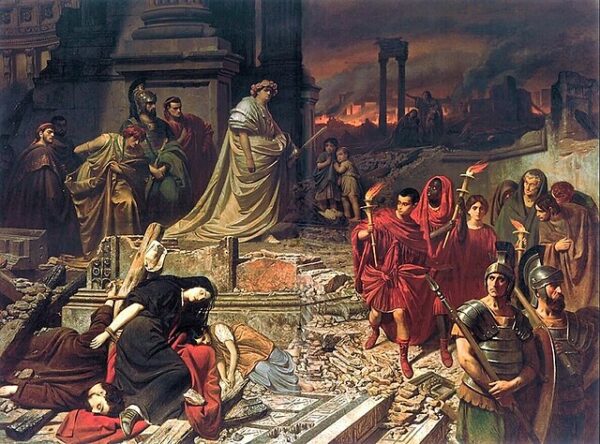On May 19, 1883, Buffalo Bill Cody, an iconic figure of the American West, unveiled his grand spectacle, Buffalo Bill’s Wild West, in Omaha, Nebraska. This event marked the beginning of a revolutionary form of entertainment that combined elements of theater, circus, and historical reenactment, bringing the mythos of the American frontier to audiences across the United States and eventually, Europe.
The choice of Omaha as the opening venue was strategic and symbolic. Located near the western frontier, Omaha was a bustling hub for travelers and adventurers heading westward. It was an ideal starting point for Cody’s ambitious enterprise, which aimed to capture and convey the spirit of the Wild West. The city’s location on the transcontinental railroad made it accessible, ensuring a steady flow of visitors eager to experience the spectacle.
Buffalo Bill’s Wild West show was unlike anything audiences had seen before. It was a vivid, action-packed portrayal of frontier life, featuring a diverse cast of characters including cowboys, Native Americans, soldiers, and sharpshooters. The show’s format was dynamic, incorporating a series of loosely connected vignettes and performances that showcased the skills and lifestyles of these figures.
One of the highlights of the opening show in Omaha was the dramatic reenactment of historical events such as the Pony Express, stagecoach robberies, and the Battle of Little Bighorn. These reenactments were designed to be both entertaining and educational, providing audiences with a sense of the challenges and adventures that defined the American West. Cody himself participated in many of these performances, lending authenticity and star power to the production. His larger-than-life persona, honed through years of real-life exploits as a scout, hunter, and showman, captivated audiences and established him as a quintessential symbol of the Wild West.
The show also featured displays of horsemanship and marksmanship that left audiences in awe. Sharpshooter Annie Oakley, one of the most famous performers in Buffalo Bill’s Wild West, dazzled spectators with her incredible accuracy and speed. Her performances, along with those of other skilled marksmen and riders, highlighted the precision and daring that were hallmarks of frontier life.
Native American performers played a significant role in the show, presenting what was advertised as an authentic glimpse into their cultures and traditions. Led by notable figures such as Sitting Bull, these performers participated in dances, horseback riding, and mock battles. While their portrayal was often shaped by contemporary stereotypes and romanticized notions of the West, the involvement of Native Americans in the show provided them with a platform and an opportunity to travel and share their heritage with a wider audience.
The opening of Buffalo Bill’s Wild West in Omaha was met with widespread acclaim. Newspapers and local reports praised the show’s realism and excitement, noting the enthusiastic reception from the crowds. The success of the Omaha debut set the stage for a national tour that would cement Buffalo Bill’s Wild West as a cultural phenomenon.
Buffalo Bill’s Wild West show left a lasting impact on American culture and entertainment. It played a crucial role in shaping the popular image of the American West, blending historical fact with fiction in ways that resonated with audiences of the time. The show’s success also demonstrated the power of live performance as a means of storytelling and cultural expression, paving the way for future forms of entertainment that sought to bring history and adventure to life.






